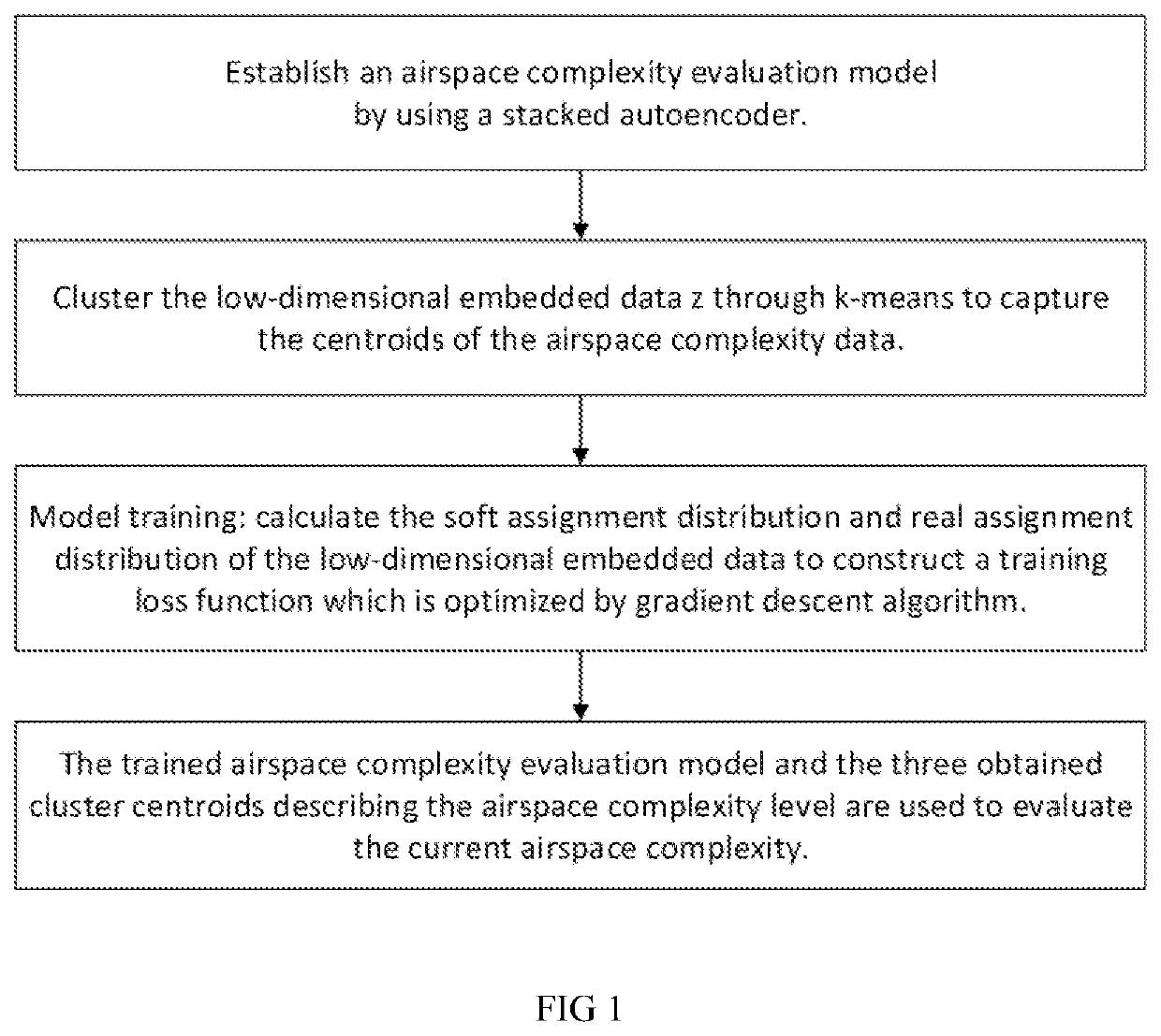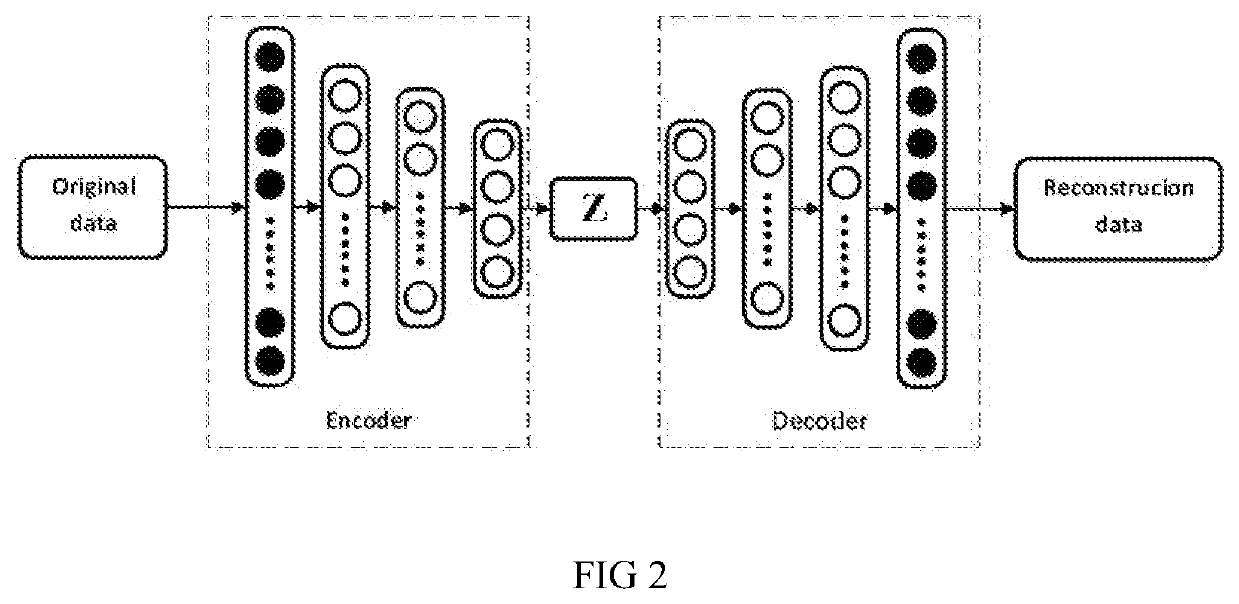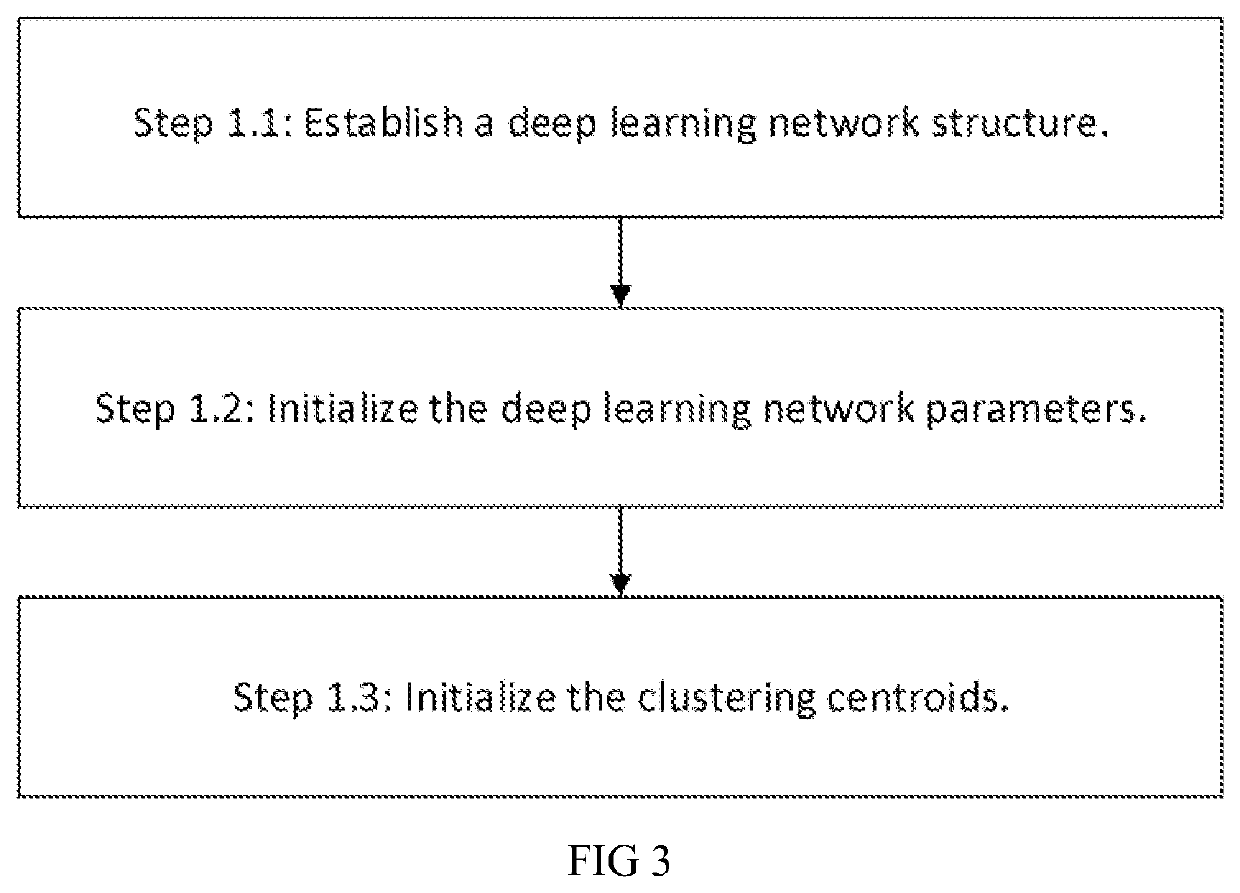Deep unsupervised learning approach , device and storage medium for airspace complexity evaluation
a deep unsupervised learning and airspace complexity technology, applied in multiple aircraft traffic management, instruments, biological models, etc., can solve the problems of airspace operation risks, requiring a lot of manpower and material resources, and traditional methods cannot achieve real-time so as to reduce the effect of manpower and material cost, accurate evaluation of airspace complexity data, and effective dimension reduction of airspace complexity factors
- Summary
- Abstract
- Description
- Claims
- Application Information
AI Technical Summary
Benefits of technology
Problems solved by technology
Method used
Image
Examples
Embodiment Construction
[0036]To facilitate those skilled in the art to understand and implement the present application, the following describes the embodiments of the present disclosure in detail with reference to the accompanying figures. The figures form a part of the present application and are used to explain the principles of the present application together with the embodiments of the present application, not to limit the scope of the present application.
[0037]With the rise of deep learning, unsupervised learning based on deep neural networks has received widespread attention. Through deep neural networks, theoretically, the complex nonlinear mapping can be realized. Therefore, the non-linear characteristics of the data space can be learned based on the data samples, which solves the blindness of traditional unsupervised learning methods. As a mature framework in deep learning, the Autoencoder based algorithms use deep neural network (DNN) architectures to extract inherent features in complex data,...
PUM
 Login to View More
Login to View More Abstract
Description
Claims
Application Information
 Login to View More
Login to View More - R&D
- Intellectual Property
- Life Sciences
- Materials
- Tech Scout
- Unparalleled Data Quality
- Higher Quality Content
- 60% Fewer Hallucinations
Browse by: Latest US Patents, China's latest patents, Technical Efficacy Thesaurus, Application Domain, Technology Topic, Popular Technical Reports.
© 2025 PatSnap. All rights reserved.Legal|Privacy policy|Modern Slavery Act Transparency Statement|Sitemap|About US| Contact US: help@patsnap.com



